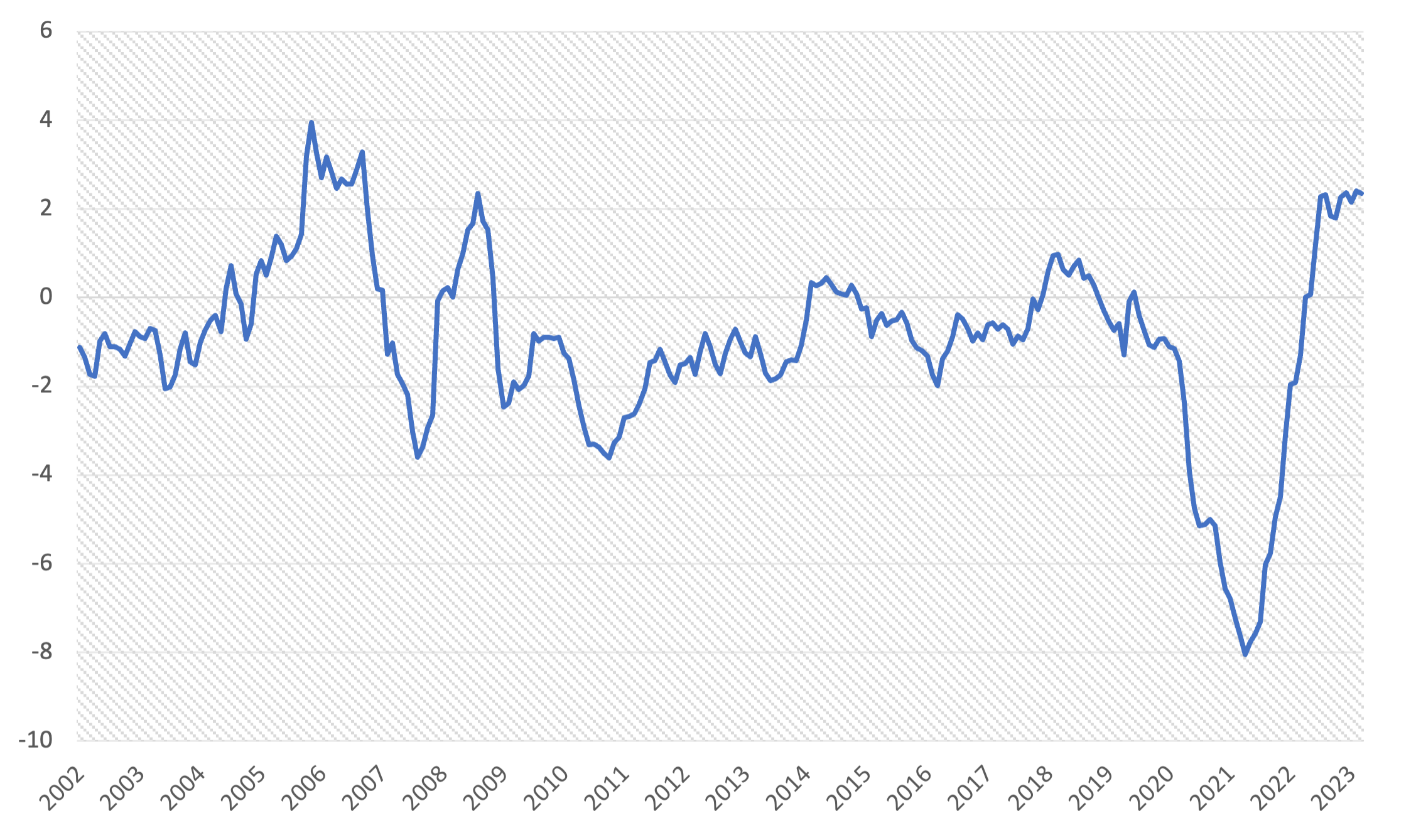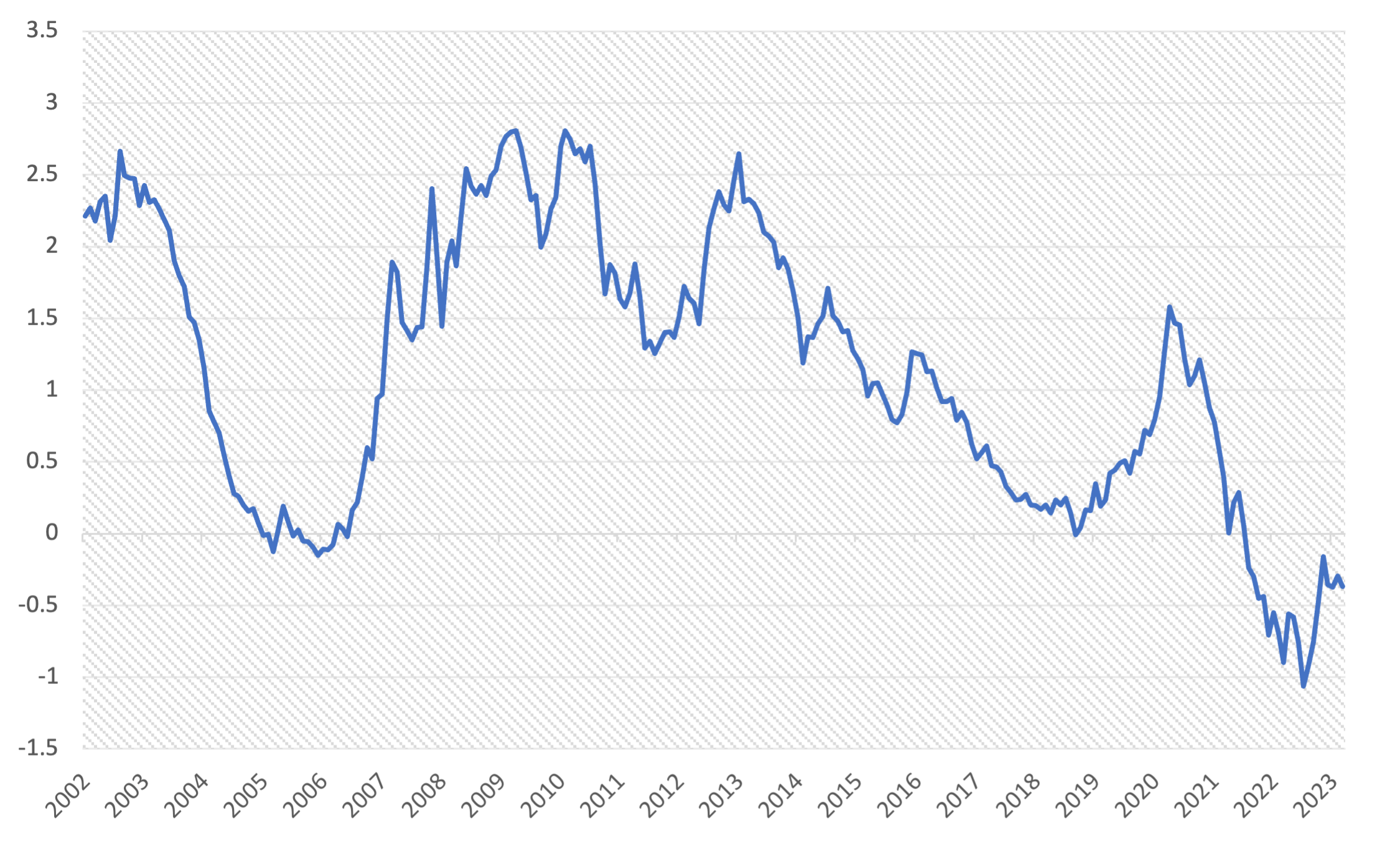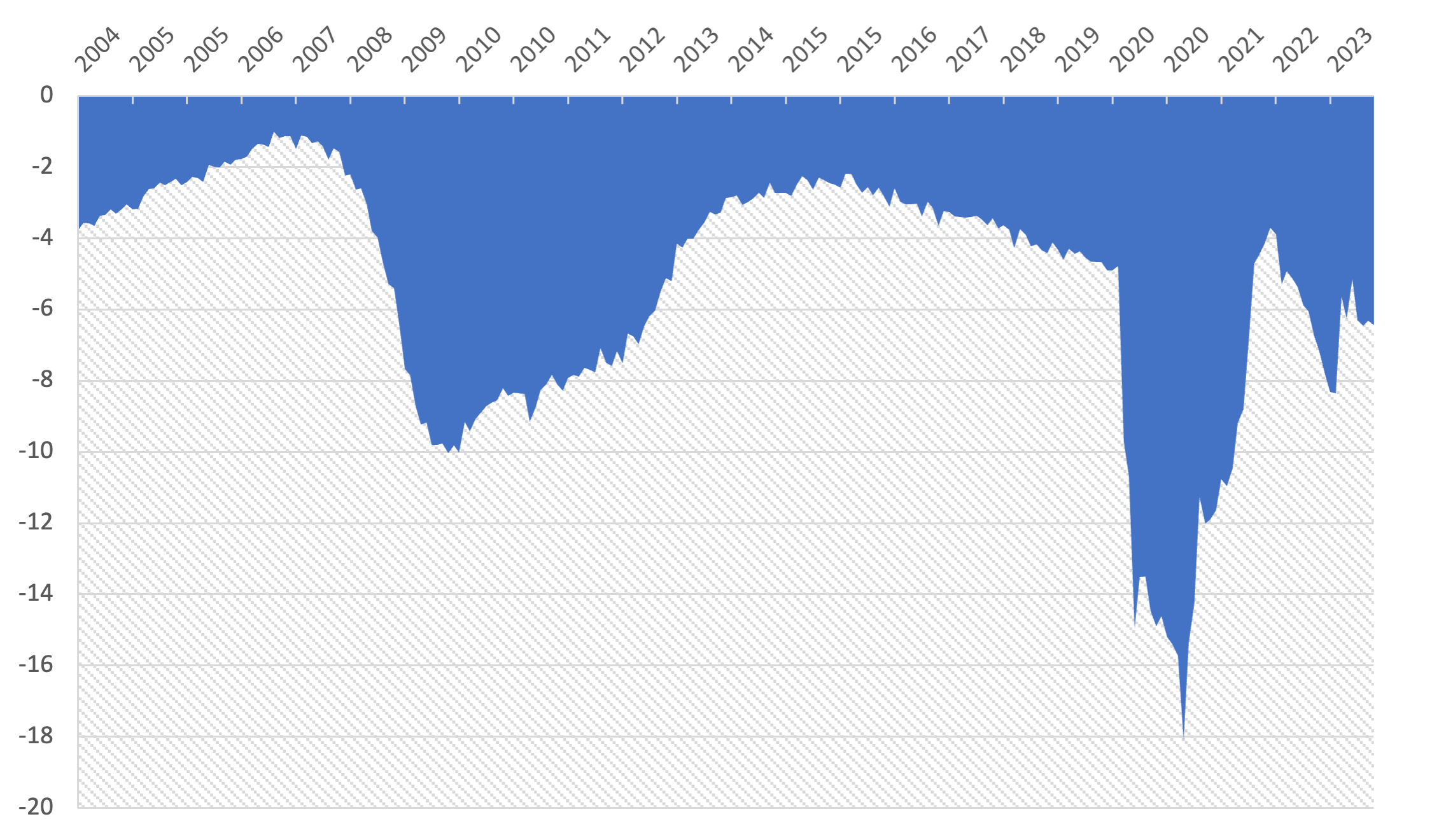“The problem with interest rates are that you are not modeling a single number, you are modeling a whole term structure, so it is a sort of different type of problem.”
- John Hull, Professor of Finance, University of Toronto
Market Returns & Outlook
| Index | YTD TR (%) | March 2024 |
|---|---|---|
| US Large Cap - S&P 500 | 10.55% | 3.22% |
| US Large Cap – Tech Heavy NASDAQ | 9.32% | 1.85% |
| International Equity – MSACWI ex US | 4.82% | 3.21% |
| US Small/Mid Cap – Russell 2500 | 6.92% | 4.13% |
| Bloomberg Aggregate Intermediate Bond Index | (0.78)% | 0.92% |
US Inflation Adjusted Fed Funds Rate

US Treasury – Yield Spread between 10 and 2 year notes

US Federal Budget Deficit as Percentage of GDP

Implications
Recommendations
We continue to advocate an elevated level of diversification across asset classes and develop specific asset allocation perimeters that cater to individual risk-tolerance thresholds. In the context of higher intermediate and long-term bond yields and the prospect of slower economic growth, high quality but moderate duration fixed Income assets should command a higher weighting in most portfolios. With interest rates projected to be higher in the next cycle compared to the past, we believe there is a large possibility of “repricing” in certain interest rate sensitive sectors. High quality income producing assets – certain commercial real estate sectors and perhaps infrastructure type assets may be available at dislocated prices offering attractive entry opportunities. We are actively seeking out these opportunities as they help reduce the duration of client portfolios through higher cash flow while dampening overall volatility. In terms of public equity, we at Trajan Wealth will maintain a bias towards companies with low debt and stable sources of revenues. In terms of mapping out optimal strategies for our clients who span the spectrum in terms of risk tolerance levels and applicable investment time horizons, we would highly recommend our clients to reach out for a portfolio review to ensure asset allocation and financial goals remain in alignment.

Udayan Mitra, CFA
Udayan is Trajan Wealth's CIO with over two decades of experience in the investment management industry. He earned a Bachelor of Science degree in Economics from the London School of Economics and an MBA in Finance from Rice University.




